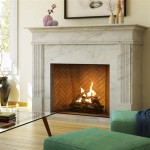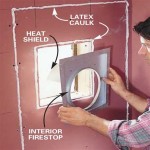Replacing a Prefabricated Fireplace: A Guide to Upgrading Your Hearth
Prefabricated fireplaces, while offering an affordable and convenient solution for adding a fireplace to a home, often fall short in terms of aesthetics, efficiency, and longevity. Over time, these fireplaces may develop issues like smoke leaks, inefficient heating, or simply an outdated look. When faced with these challenges, homeowners often consider replacing their prefabricated fireplaces with a more substantial and elegant alternative. This article will provide a comprehensive guide to replacing a prefabricated fireplace, delving into the key considerations, the different types of fireplace upgrades, and the process involved in making this home improvement project a success.
Understanding the Process of Replacing a Prefabricated Fireplace
Replacing a prefabricated fireplace is a significant undertaking that necessitates careful planning and execution. While the specific steps may vary based on the type of fireplace being installed and the existing structure, the general process usually involves the following:
1.
Demolition:
The first step is to carefully remove the old prefabricated fireplace. This involves dismantling the existing unit, including the firebox, mantel, and any surrounding finishes. It is essential to wear appropriate safety gear during this process and to exercise caution to avoid damaging adjacent structures.2.
Framing and Masonry:
Once the existing fireplace is removed, the next step involves preparing the space for the new fireplace. This may require framing the opening, installing fire-resistant materials, and ensuring the walls and floor around the fireplace are properly insulated. In cases where the existing fireplace was built into a brick or stone chimney, a new hearth may need to be constructed.3.
Installation:
The new fireplace unit is then installed, which can be done by a professional installer or, depending on the complexity, by the homeowner with proper knowledge and tools. This process involves connecting the fireplace to the chimney, installing the firebox, and securing the surrounding mantel and trim.4.
Finishing Touches:
The final step involves adding the finishing touches. This may include applying mortar, painting, and sealing the fireplace to ensure it is properly protected and aesthetically pleasing.Exploring Different Fireplace Upgrade Options
Replacing a prefabricated fireplace opens up a world of possibilities for upgrading the hearth in your home. Here's a closer look at some popular options:
1. Traditional Masonry Fireplaces
Traditional masonry fireplaces are known for their timeless elegance and durability. Constructed using bricks, stone, or other natural materials, these fireplaces offer a substantial presence and can be customized to complement any architectural style. However, traditional masonry fireplaces require skilled craftsmanship and are typically more expensive than other options.
2. Gas Fireplaces
Gas fireplaces offer convenience and efficiency. They are fueled by natural gas or propane and are relatively simple to operate. Gas fireplaces are often available in various designs, including traditional, contemporary, and contemporary styles. They are also generally more energy-efficient than other types of fireplaces.
3. Electric Fireplaces
Electric fireplaces are the most accessible and budget-friendly option. These fireplaces feature realistic flames and heat output and are easy to install. Electric fireplaces are ideal for spaces where gas or wood-burning options are not feasible or desirable.
4. Prefabricated Fireplaces with Improved Features
While the initial prefabricated fireplace may have been limited, modern prefabricated fireplaces have become more sophisticated. They offer improved features like higher efficiency, better aesthetics, and enhanced safety features.
Key Considerations for Choosing a Fireplace Upgrade
When choosing a fireplace upgrade, several important factors come into play:
1.
Budget:
Fireplace upgrades can range in cost, from relatively affordable electric fireplaces to more expensive traditional masonry options.2.
Aesthetics:
Consider the overall design of your home, including the fireplace's placement and the surrounding décor, when choosing a style that complements the existing architecture.3.
Efficiency:
If energy efficiency is a priority, consider a gas or electric fireplace, which are generally more efficient than wood-burning options.4.
Safety and Maintenance:
Choose a fireplace that meets local building code requirements and has features for safe operation and ease of maintenance.5.
Installation:
Carefully consider the complexity of the installation process and choose a fireplace that can be installed by a professional or, if desired, by the homeowner with suitable skills.
Time To Replace Wood Burning Prefab Fireplace Greenville Sc Blue Sky

Is It Time To Replace That Old Prefabricated Fireplace
Replacing Factory Built Fireplaces Jlc

Prefabricated Fireplace Replacement Installation

Prefab Fireplace Doors Large Selection Affordable

Zero Clearance Vs Prefabricated Fireplace Full Service Chimney

Caring For Prefabs Ask The Chimney Sweep

New Wood Burning Prefab Fireplaces Complete Fireplace Installs

Woodstove Or Prefabricated Fireplace Removal And Installation Hampton Roads Richmond Chim Chimney Llc

Pre Fabricated Fireplace Repair Installation San Diego Chimney Sweep Prefabricated Specialists
Related Posts








